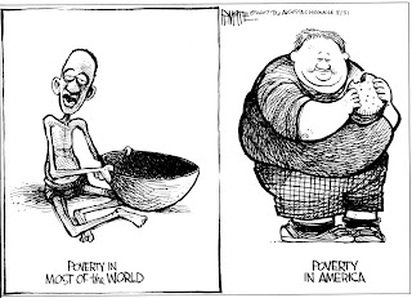David777
Well-known Member
- Location
- Silicon Valley
New CDC article is in news today.
The US is now the fattest it’s ever been as obesity rates rise again, CDC says — and these are the most overweight states

Adult Obesity Facts
The prevalence of obesity among U.S. adults 20 and over was 41.9% during 2017–March 2020.1 During the same time, the prevalence of severe obesity among U.S. adults was 9.2%. This means that more than 100 million adults have obesity, and more than 22 million adults have severe obesity.
The prevalence of obesity increased from 30.5% in 1999-20002to 41.9% in 2017–March 2020. During the same time, the prevalence of severe obesity increased from 4.7% to 9.2%.
Note: Obesity is defined as having a body mass index (BMI) of 30.0 or higher. Severe obesity is defined as having a BMI of 40.0 or higher.
In 2017–March 2020, non-Hispanic Black adults had the highest obesity prevalence (49.9%) followed by Hispanic (45.6%), non-Hispanic White (41.4%), and non-Hispanic Asian (16.1%) adults.1
In 2017–March 2020, obesity prevalence was highest among U.S. adults with a high school diploma or some college education (46.4%) followed by those with less than a high school diploma (40.1%) and those with a college degree or above (34.2%).1
In 2017–March 2020, differences by age group were not statistically significant. Obesity prevalence was 39.8% among U.S. adults aged 20–39 years, 44.3% among adults aged 40–59 years, and 41.5% among adults aged 60 years and older..1
The US is now the fattest it’s ever been as obesity rates rise again, CDC says — and these are the most overweight states

Adult Obesity Facts
- Obesity is a serious, common, and costly chronic disease. More than 2 in 5 U.S. adults have obesity.
- Obesity affects some groups more than others, including non-Hispanic Black adults and adults with less education.
- Many adults with obesity have other serious chronic diseases, including diabetes and heart disease.
- Obesity accounts for nearly $173 billion in medical expenditures in 2019 dollars.
The prevalence of obesity among U.S. adults 20 and over was 41.9% during 2017–March 2020.1 During the same time, the prevalence of severe obesity among U.S. adults was 9.2%. This means that more than 100 million adults have obesity, and more than 22 million adults have severe obesity.
The prevalence of obesity increased from 30.5% in 1999-20002to 41.9% in 2017–March 2020. During the same time, the prevalence of severe obesity increased from 4.7% to 9.2%.
Note: Obesity is defined as having a body mass index (BMI) of 30.0 or higher. Severe obesity is defined as having a BMI of 40.0 or higher.
In 2017–March 2020, non-Hispanic Black adults had the highest obesity prevalence (49.9%) followed by Hispanic (45.6%), non-Hispanic White (41.4%), and non-Hispanic Asian (16.1%) adults.1
In 2017–March 2020, obesity prevalence was highest among U.S. adults with a high school diploma or some college education (46.4%) followed by those with less than a high school diploma (40.1%) and those with a college degree or above (34.2%).1
In 2017–March 2020, differences by age group were not statistically significant. Obesity prevalence was 39.8% among U.S. adults aged 20–39 years, 44.3% among adults aged 40–59 years, and 41.5% among adults aged 60 years and older..1


